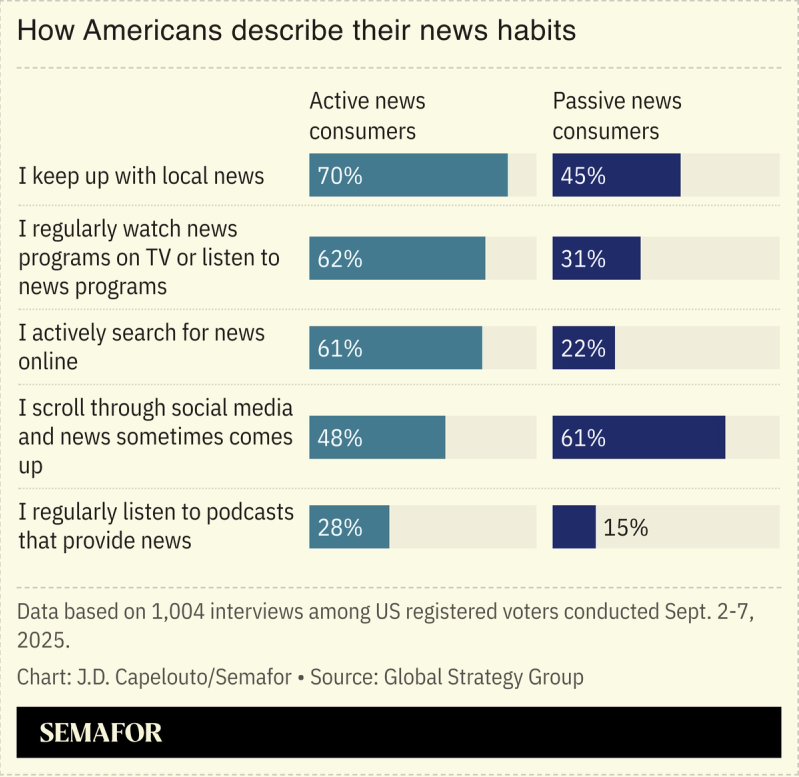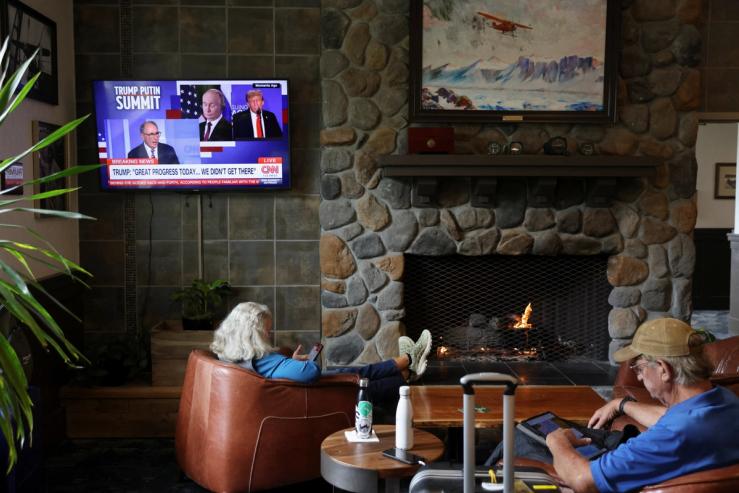The Scoop
American politics going forward is increasingly divided along a new faultline: active news consumers and passive news consumers.
That’s a key finding from a new report first shared with Semafor by Global Strategy Group, a polling company with ties to Democrats and progressive organizations. The survey of several thousand registered voters found that a large share of voters, more than 40%, are passive news consumers, defined as people who let information come to them rather than seeking it out.
While the study found that both spend similar time on social media platforms, there were key differences between the groups.

According to the survey, active news consumers tended to be older, left-leaning viewers of cable news. Seventy-two percent of self-described MSNBC viewers and 71% of CNN viewers were active consumers, as were 69% of seniors and daily users of the social media site X. Still, active news consumption cut across party lines: 67% of “strong Democrats” and 64% of voters who identified as “MAGA Republicans” were active news consumers.
GSG found the people most likely to be passive news consumers were young, Gen Z voters who rarely watch live television, have not been vaccinated against COVID-19, or consider themselves to be politically independent or a non-MAGA Republican. According to the survey, 54% of women aged 18-54 and 48% of service industry workers were passive news consumers.
“This very potentially politically influential audience is disproportionately on these algorithm-driven social media platforms, and that’s where they’re increasingly getting their understanding and information about current events,” Will Jordan, one of the study’s authors, told Semafor in an interview. “In many ways, 2024 was a sort of expression of how much political impact that can have, with all the swings you saw among young people, among working-class people, among people who are less engaged in politics.”
Know More
Some of the findings weren’t totally surprising. Active news consumers were much more likely to be politically engaged, while passive news consumers were much more likely to be disengaged or moderately engaged in politics. Passive news consumers were also much less likely to see political content in their social media feeds, compared to active news consumers, of whom 85% said they saw political content on social media frequently or regularly.
The results of GSG’s survey may also offer clues for Democrats who have been baffled by the fact that years of negative Trump headlines haven’t seemed to dent his popularity; in this media environment, the information either isn’t breaking through or people aren’t paying attention.
But Jordan also noted that this new landscape presents opportunities for political candidates who can come across as “authentic” or create compelling content that can gain organic algorithmic traction.
“People are so inured to — or so used to — being exposed to media from people they’ve never seen before, because it’s on the algorithm, it’s being presented to them, that I think ultimately these other factors — the feeling of authenticity, the familiar affiliations within that sort of mix of new faces and names — [will become] relatively more important.”
He added: “You are expected to meet people where they are emotionally in a way that I think wasn’t necessary before. Whereas now, if you’re able to have that message, have that connection with people, you save a lot of money [on political advertising], because suddenly, suddenly, the platforms are going to be doing your work for you.”


